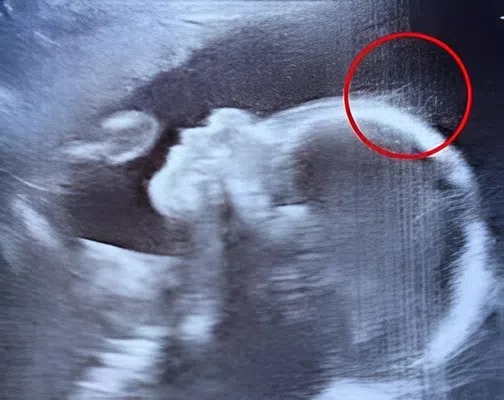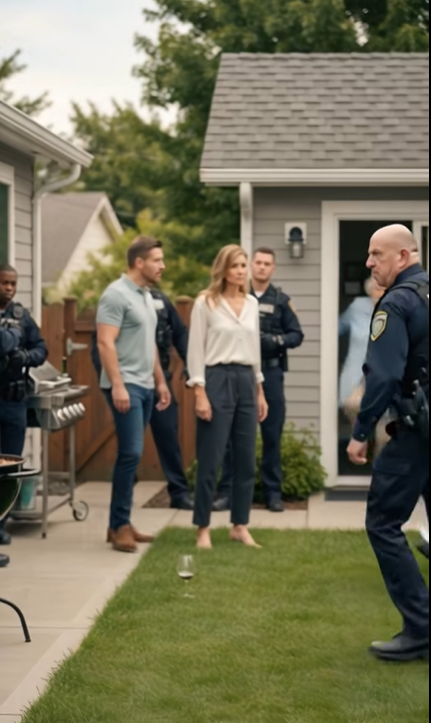A Small Town Story That Became Everyone’s Story
In a quiet town where the red dust of the roads clings to shoes and daily life moves with the rhythm of engines and market stalls, one girl has become the subject of both whispers and wonder. Her name is Amarachi.
To some, she is the girl with the eye patch. To others, she is a mystery—part defiance, part fragility. But to those who know her story, she is something else entirely: a reminder that what we see on the surface rarely reveals the truth beneath.
A Scar That Spoke Louder Than Words
Amarachi, just 12 years old, wears her black eye patch with an unusual stillness. A jagged scar stretches from her forehead, through the delicate skin of her right eye, down to her cheek. The wound, the result of a childhood accident no one in the community speaks of openly, has left more than just a mark on her face.
It has left her carrying the burden of judgment.
“At school,” says one teacher who requested anonymity, “children can be cruel. They laugh, they whisper, they point. They see the patch, but they don’t see the person.”
For Amarachi, each whisper is a reminder that she is not seen for who she is, but for what people think she hides.
A Father’s Hands, A Father’s Words

Her father, Chike, a local mechanic, spends long hours bent over engines, his fingers blackened with grease, his shoulders heavy with the weight of survival. Yet his spirit, those who know him say, remains unbroken.
Neighbors recall seeing him walking home from his workshop late at night, lunchbox empty, shirt stained with oil, carrying a small schoolbag in his free hand.
“He works for her,” says Mrs. Ebele, a neighbor who often brings the family food. “Every turn of a wrench, every long day—it’s for that girl. He wants her to have what life almost took away.”
Chike himself spoke softly when asked about his daughter:
“Beauty is not in the face. It is in the heart. I tell her this every day, so that she remembers that her scars are not chains—they are proof she survived.”
School: A Place of Dreams, and Wounds
For Amarachi, the classroom has been both a sanctuary and a battlefield. She dreams of becoming a doctor, inspired by the hospital visits that followed her accident. “I want to heal others, because I know what pain feels like,” she once told her father.
But among her peers, her eye patch drew more curiosity than compassion. Children imitated her behind her back. Some teachers, uncomfortable with her appearance, avoided addressing the issue at all.
“It was like the scar wasn’t just on her face,” one student confided. “It was on all of us. We didn’t know what to say, so we said nothing. Or worse, we laughed.”
The cruelty weighed heavily, but Amarachi endured. Each day she entered the classroom was an act of courage—a silent declaration that she would not let stares dictate her future.
The Accident No One Speaks Of
The exact nature of Amarachi’s accident remains a guarded secret in the community. Some say it was a freak fall, others whisper about shattered glass, still others claim it was a fire. What is certain is that she nearly lost her life—and that her survival was nothing short of a miracle.
Doctors managed to save her eyesight, though partially impaired. The scar and the patch became permanent companions. The accident left the family with hospital debts that her father still struggles to pay, yet Chike never complains.
“I thank God she is alive,” he says. “Money can be found, but a child cannot be replaced.”
A Community Divided
The story of Amarachi has split the town in unexpected ways. Some sympathize, admiring her resilience and her father’s devotion. Others, however, continue to view her difference with unease.
“Children like her… they make people uncomfortable,” said one shopkeeper bluntly. “Not because of her fault, but because she reminds us how fragile life is.”
At church, congregants have rallied behind the family, raising small donations to help with school fees. Yet even there, Amarachi sometimes feels the sting of being “the girl with the patch.”
Her father insists on teaching her to walk proudly, shoulders straight, chin raised. “You cannot hide from people,” he tells her. “But you can make them see your strength.”
When the Whispers Became a Roar
The turning point came earlier this year during a school event. Students were asked to present essays about “My Dream for the Future.” Amarachi stood nervously at the front of the classroom, clutching her paper.
Her voice, soft at first, grew steadier as she spoke:
“I want to be a doctor. People see my patch and think I am broken. But I am not broken. I am healing. And I want to help others heal too.”
For a moment, the room fell silent. The same children who had mocked her sat frozen. Some bowed their heads in shame.
Later, one teacher admitted, “It was the first time many of us truly listened to her—not to her patch, but to her heart.”
The Father’s Sacrifice
Meanwhile, Chike’s sacrifices continue to mount. He turned down job offers in larger cities, refusing to leave Amarachi without support. He works double shifts, often skipping meals, just to ensure she has notebooks, pencils, and school uniforms.
When asked how he endures, his answer is simple:
“Engines can be fixed with tools. But a child’s heart is fixed with love.”
A Story Beyond Borders
News of Amarachi’s story has begun to spread beyond the town, shared on social media and picked up by local radio. What started as whispers of cruelty has transformed into conversations about resilience, beauty, and the way societies treat those who are different.Travel insurance deals
Human rights groups have even highlighted her case as an example of the need for greater awareness about bullying and discrimination in schools. “Children like Amarachi are often silenced twice,” one activist explained. “First by their scars, and second by our unwillingness to see past them.”
A Future Still Unwritten
As Amarachi continues her education, the world is left to wonder what her future holds. Will she fulfill her dream of becoming a doctor? Will the community embrace her fully, or will the whispers always follow?
The only certainty lies in the bond between father and daughter—a bond stronger than cruelty, deeper than scars.
When asked what he hopes for his daughter’s future, Chike answered quietly but firmly:
“I hope she sees what I see. Not a girl with a patch. Not a scar. But a heart so bright, it can light the darkest road.”
Conclusion: More Than Meets the Eye
The story of Amarachi is not just about one child or one town. It is about the hidden battles fought every day by those who carry visible scars, and the invisible ones carried by us all.
In a world quick to judge and slow to understand, Amarachi’s eye patch is more than fabric and thread. It is a symbol—a challenge to look deeper, to listen harder, to recognize beauty where we least expect it.
The next time her classmates whisper, the next time strangers stare, perhaps they will remember her words: “I am not broken. I am healing.”
And perhaps, in that moment, they will realize the truth: the strongest people often wear scars we cannot see.





